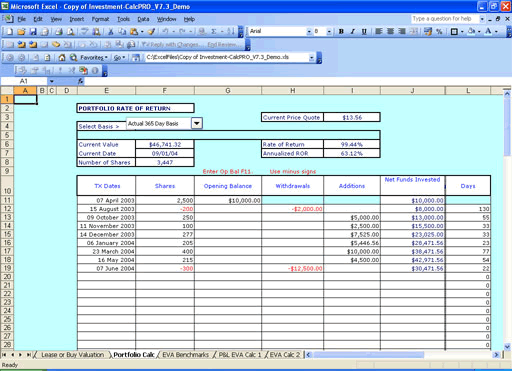How to Use Net Present Value in Your Real Estate Analysis
Post on: 30 Март, 2015 No Comment

April 4, 2013 By James Kobzeff
Net Present Value (NPV) is a real estate investing measure widely used for investment real estate analysis as a base to determine if the future cash flows expected to be generated by a rental property have a present value larger than the amount of cash required to invest in the rental property.
Simply put, net present value tells the real estate investor whether his or her target rate of return will be achieved, and thus, whether the property should attract the investors capital into that investment.
The Model
The net present value model is based on a decision rule that states if the discounted present value of future benefits is equal to or greater than the cost of those benefits it is a profitable opportunity. Whereas, if the present value of the future benefits is less than the cost for those benefits, the rate of return will not be achieved and chances are good that the investor should take another look.
How It Serves Investors
Lets consider a simple illustration to help frame the idea.
When you place your money into a savings account (i.e. invest your capital) you expect it to earn interest (i.e. provide future benefits). The bank dictates the return and you are either willing or unwilling to tie up your capital based upon your acceptance of that return. For example, whereas you might deposit $10,000 to earn 3.8% interest, you might not make the investment for 1.2% interest.
Okay, but suppose a bank doesnt quote an interest rate and youre only told what amount of money youll collect in the future.
For example, youre told that youll collect $10,300 next year for a deposit of $10,000 made today with no mention of interest rate. How would you know what yield your investment is earning, and whether or not to make the investment? Thats the dilemma real estate investors face when evaluating and investment decision.
Though theres a projection for a future benefit, theres no mention of yield. Therefore the real estate investor has no idea what rate of return he or she may achieve and therefore no way to compare it to other potential investment opportunities adequately.
Thats where net present value comes in.
It takes your desired rate of return and essentially tells you if the future cash flows (benefits) from a property achieve that yield on your capital investment or not. In other words, you plug in the yield you want and NPV provides a result that will inform you whether that target yield is achieved.
How It Works
NPV discounts all future cash flows by the desired rate of return to arrive at a present value of those future cash flows, and then it deducts that amount from the initial equity (capital invested).
Lets assume three separate investment opportunities each requiring an investment of $100,000. But based upon the present value of each of their future cash flows the result is $105,000, $100,000, $95,000. The NPV for each of the properties would individually be
- -$5,000 (100,000 105,000)
- zero (100,000 100,000)
- $5,000 (100,000 95,000)
- The negative dollar amount means that the present value of future benefits is less than the amount invested and that the specified rate of return is not met. In other words, you might want to keep looking.
- The zero dollar amount signifies that the desired yield is perfectly met.
- The positive dollar amount signifies that the desired rate of return is met with room to spare. In other words, this property could be a winner.














